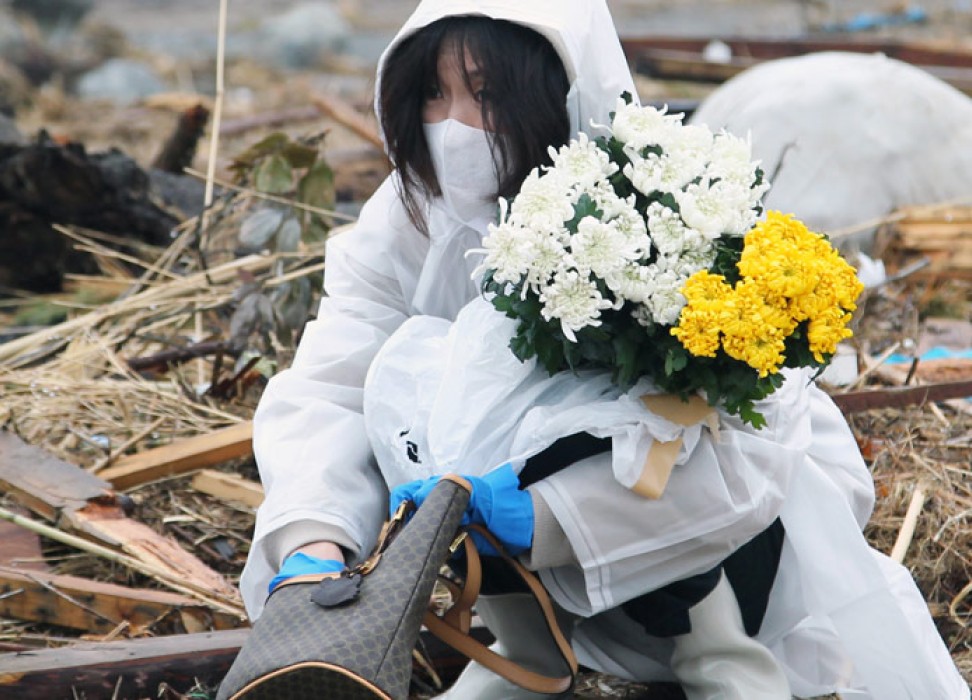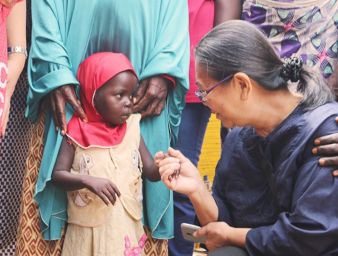An unresolved uprooted life
10 July 2018

Ms. Sonoda was living in Fukushima, Japan, with her husband and their child in a beautiful natural environment and with a strong local community. The day of the nuclear disaster, 11 March 2011, they felt an enormous earthquake and unrelenting aftershocks. They later saw the explosion of reactor one, live on television.
“It was a massive shock. We began preparing in case we needed to move quickly and two days later reactor three exploded,” she recalls. “We decided to evacuate because we knew reactor three used MOX [Mixed Oxide] fuel which contains plutonium. It was a nightmare. Suddenly the nuclear disaster destroyed our lives in Fukushima.”
With the Mayor and the local school, Ms. Sonoda tried to arrange the evacuation of children but she says the local Government stopped them. Because of the damage caused by the earthquake, roads were blocked; the provision of food and fuel started to dwindle. They could not save the children from the early stages of radiation exposure.
“The declaration of a nuclear emergency continues but last year the Government lifted most evacuation zones, even though many are still highly contaminated, and they stopped housing support. This pressures the citizens to return to Fukushima,” Ms. Sonoda points out.
According to Ms. Sonoda, the Government of Japan does not recognise those uprooted by the Fukushima accident as internally displaced persons, although 20 years ago the Guiding Principles on Internal Displacement acknowledged human-made disasters. Further, they have not been allowed to participate in the Government’s decisions that affect them.
“We don’t want to return with children and stay in radioactive and contaminated areas. We can’t see radiation, we can’t smell radiation,” Ms. Sonoda says. “We really need the Government to check the children’s health. They only scanned for thyroid cancer but no other health checks were made. We don’t know how [radiation] will affect children in the future.”
“Many people also struggle financially so we need basic housing support to stay evacuate,” she adds.
Over 40 million people around the world are currently internally displaced because of conflict and violence in the world, and an average of 25 million people is displaced each year due to natural disasters. Millions of other displacements are not systematically captured including those caused by land grabs, slow-onset disasters such as drought, and criminal violence.
It was that type of violence that uprooted Gildo Garza Herrera from his native state of Tamaulipas, northern Mexico.
Garza Herrera has been working as a journalist for the past 20 years. In 2017, he was forced to flee with his family to the capital Mexico City following several attempts against their lives by narcotraffickers. They left behind their livelihood.
“[Mexico is] the most dangerous country in the world to practice journalism,” he says. “They kill you; if you manage to survive, they condemn you to exile with your family, a desperate decision that by June 2018 at least 70 journalists have had to make to protect themselves.”
Garza Herrera says that of the 329,000 internally displaced persons in Mexico, 70 are journalists. He points out, however, that the Government does not recognize displacement and that there is no legal framework to create a comprehensive response to the problem.
“The forced displacement of journalists has several impacts: economic, labour, social and especially on freedom of expression. The communities these journalists have left are running out of information,” Garza Herrera stresses. “Tamaulipas, Veracruz, Guerrero, Sinaloa, Chiapas, Chihuahua and other states in Mexico are recognized by the Inter American Commission on Human Rights as “silenced zones” for freedom of expression.”
In April, the National Human Rights Commission of Mexico and other civil society organizations presented to Congress a draft law for the recognition of forced displacement. However, because of the recent electoral period, discussions around the law came to a halt.
Because of the current status quo, Garza Herrera and his fellow displaced journalists have decided to organize through the creation of an association. They are looking for support from international donors to build a shelter for newly displaced journalists and provide access to education to their children.
“It is important that discussions resume when we have a new Senate and other authorities in place, so the issue can be acknowledged and a response based on that law can be organized around it,” Garza Herrera says.
World projections indicate that climate change alone could uproot over 143 million people by 2050. The expected upward trend in displacement may accelerate global urbanization and thus put additional pressure on urban host communities, which may exacerbate criminal violence in cities.
No region or country is immune to internal displacement, and States must fulfil their responsibilities toward internally displaced people. This requires involving the displaced themselves in discussions to find durable solutions to mitigate the risks of long-term social, political and economic marginalisation, as endured by the survivors of dramatic man-made disasters such as the Fukushima accident.
10 July 2018

